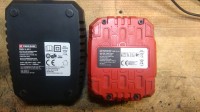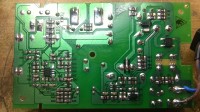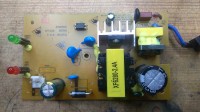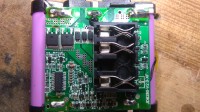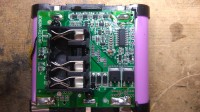Hello
After replacing the cells (4 pcs. x 3.7V 2000mAh) in the battery of the Parkside PABS 16 screwdriver with Samsung Li-ion 3.7V 2600mAh cells, the charger does not charge the battery. The cells are properly heated, the battery worked as it should, but I can't charge it. Despite the fact that it is discharged - the charger shows that it is charged (I attach a video). Can this charger be modified in some way to make it work?
After replacing the cells (4 pcs. x 3.7V 2000mAh) in the battery of the Parkside PABS 16 screwdriver with Samsung Li-ion 3.7V 2600mAh cells, the charger does not charge the battery. The cells are properly heated, the battery worked as it should, but I can't charge it. Despite the fact that it is discharged - the charger shows that it is charged (I attach a video). Can this charger be modified in some way to make it work?




